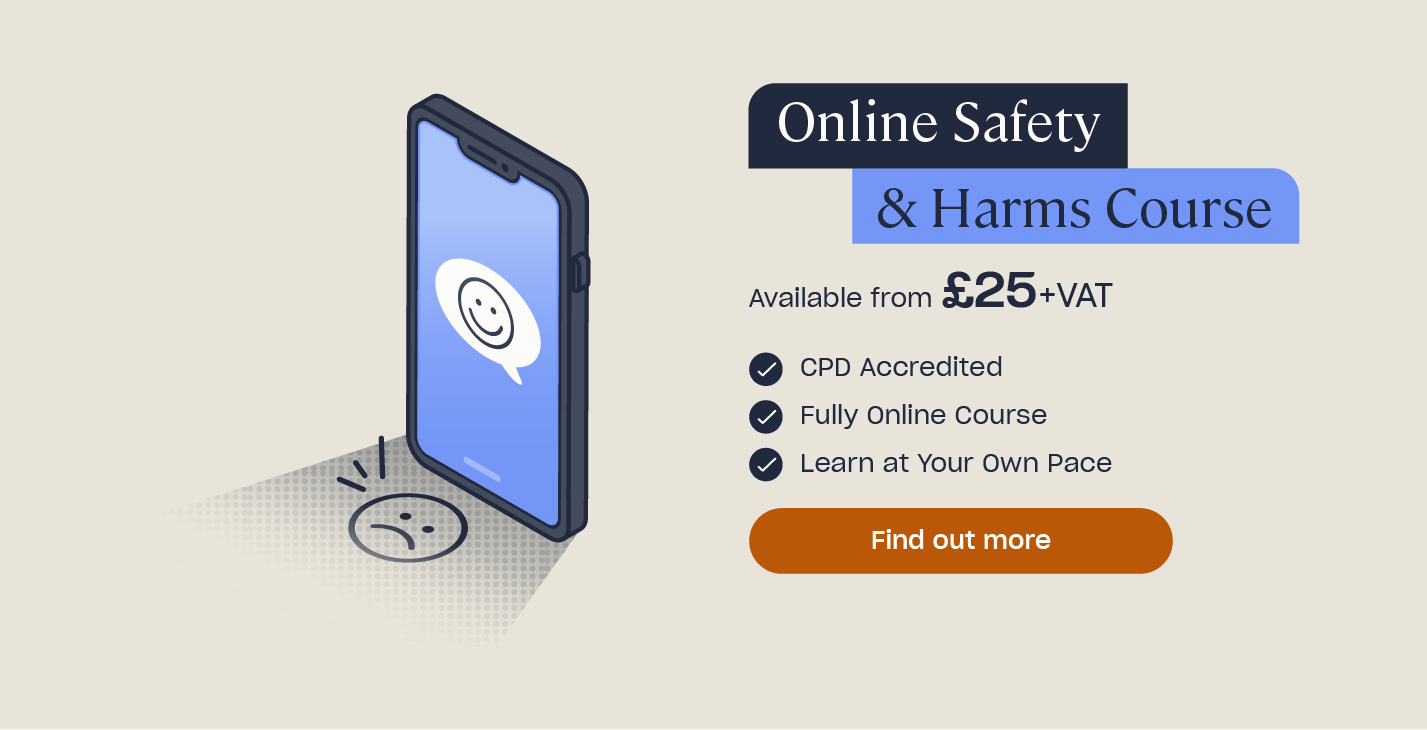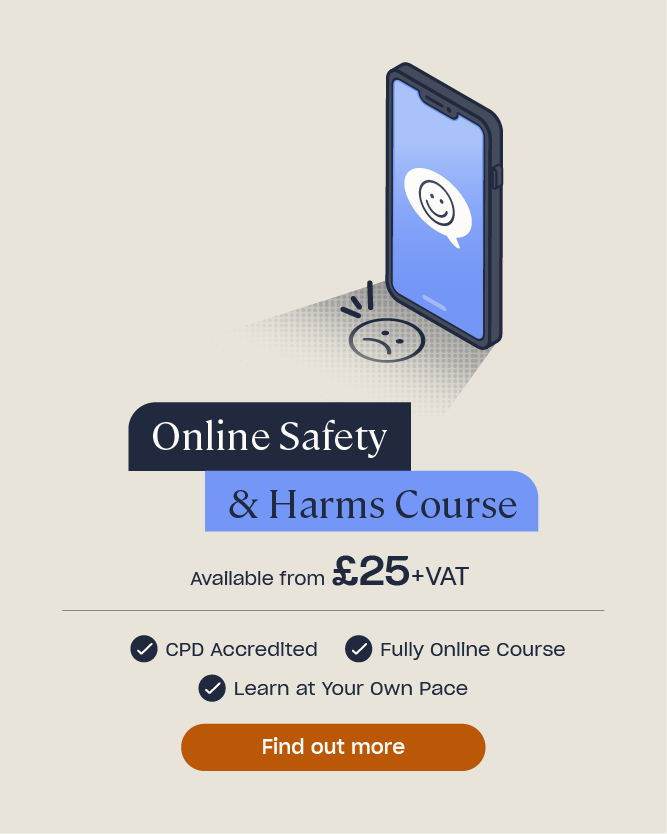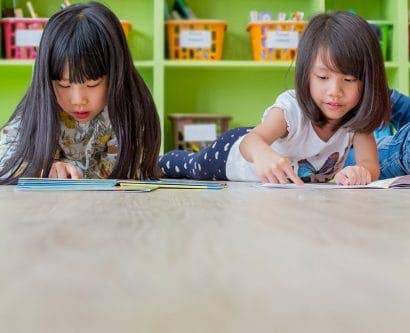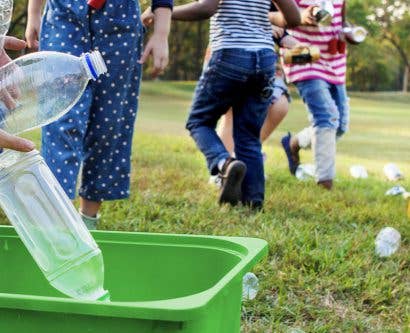What is Media Literacy and Why is it Important?
Interacting with the media plays a large part in our modern lives, and there are now more media platforms and ways to access content and information than ever before. Developing media literacy skills is vital for all of us, and it is especially important that we provide opportunities for children and young people to understand the need for media literacy and to build their own skills.
In this article, we will explore what media literacy is and the skills it encompasses. We will also consider the role that schools play in developing media literate individuals and provide some examples of how media literacy skills can be taught in the classroom.
What is Media Literacy?
There is not a single agreed definition of media literacy but Ofcom (the UK’s independent communications regulator) defines it as the ‘ability to use, understand and create media and communications in a variety of contexts.’

‘Media’ refers to large scale communications and covers a wide range of ways that we receive and share information. These include (but are not limited to):
- Newspapers, leaflets and other printed material.
- Television and radio broadcasts.
- Websites.
- Online news feeds and information services.
- Social media. This includes information received and shared via social networking platforms, such as TikTok, Facebook and Instagram.
‘Literacy’ refers to competence and knowledge – in this case with reference to being able to access different types of media to gain information and then interpreting and analysing the information that we receive via the media.
Although media literacy does encompass printed and ‘offline’ media, when we are referring to developing media literacy skills, we primarily mean in reference to online or electronic media.
In 2021, the Department for Digital, Culture, Media & Sport (DCMS) published their Online Media Literacy Strategy, outlining a framework to improve media literacy across the UK. Alongside this, they have published annual action plans detailing the progress made towards meeting that aim.
Media Literacy Skills
The DCMS framework highlights five key principles of media literacy. These are interrelated and inform each other. Good media literacy skills include:
- Understanding the Risks of Sharing Personal Data Online
Users should be aware of the fact that their personal data can be used by others, and have an understanding of how to protect their privacy online. This ranges from understanding the importance of password protection, knowing what it means when you ‘accept cookies’, to knowing how to set privacy settings on social media accounts or parental settings on apps.
- Understanding How the Online Environment Operates
It is important that users understand some of the key elements of how the online world works. For example, users should understand that much of the online content that they are presented with is driven by algorithms based on their online behaviour. This could relate to commercial information such as tailored advertisements based on recent searches.
It is also important to realise that such algorithms influence news feeds. You are presented with the news that the algorithm thinks you will interact with. This can lead to a risk of echo chambers – meaning there is a potential lack of balance in the information you receive, giving a skewed picture of an issue or topic.
- Knowing How Online Content is Generated and How to Critically Analyse Content
Being able to analyse and evaluate the information that you encounter is an extremely important part of media literacy skills. Users should be able to determine whether information is from a trusted source and know how to check and assess the reliability of the information they are given.
It is important to realise that every piece of media content can carry bias. It has been created for a purpose with an audience in mind and is designed to produce an outcome. This applies to anything from an airbrushed fashion advertisement to the language used to describe a statistic in a news story (consider the difference in impact of ‘just 46%’ to ‘almost half’).

Those with good media literacy skills will understand what misinformation (information that is unintentionally misleading) and disinformation (information that is deliberately misleading) are. They should know what to do should they need to report false content, and will be able to differentiate between fact and opinion.
At the very core of this principle is to maintain a questioning attitude and not to simply assume that all information that you encounter is true or trustworthy. Young people can be particularly impressionable and therefore it is especially important to foster this principle from a young age.
- Realise That Online Actions Have Consequences Offline.
Knowing what is acceptable and unacceptable behaviour online is vital to good media literacy. Users should be able to use that knowledge to influence their own interactions, and know to report any incidents of harmful content or conduct that they witness, or are subject to.
It is important to understand that we each have a digital footprint and that our interactions online contribute to our online reputation. Posting or liking content is not anonymous. For example, it is now a requirement of Keeping Children Safe in Education (KCSIE) that an online search of publicly available information is conducted on potential candidates applying for roles in education settings, as part of safer recruitment processes.
- Understand How to Participate Safely in Online Engagement
This principle covers a range of skills that help users participate safely in the online world, and contribute to creating a positive online environment. It encompasses knowing how to create content, how to engage effectively in online conversations and how to control who is able to access their content. It also includes knowing how to keep themselves safe, to seek help and to recognise if they are experiencing online harm.
Together, these principles work towards enabling people to benefit from the advantages of engaging with online media, whilst making them aware of the potential risks and consequences. Importantly, by developing their understanding of how content is created and how to critically evaluate the information they receive, they will be able to make informed decisions as to the reliability of the information.
Media literacy allows people to have the skills, knowledge and understanding to make full use of the opportunities presented by both traditional and new communications services. Being media literate online is fundamental to how people act as consumers, users and digital citizens.
Ofcom
Why is Media Literacy Important in Schools?
As education professionals, it is important that you take the opportunity to help promote and develop the media literacy skills of the children that you work with.
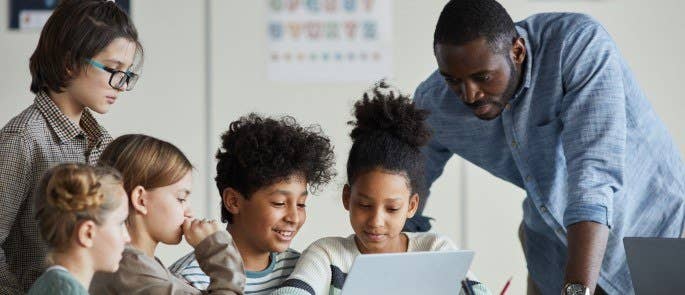
Meeting Safeguarding Responsibilities
As part of the statutory duties to safeguard children, there is a responsibility to teach children how to keep themselves and others safe, both online and offline. Many of the skills mentioned in the section above relate to online safety.
By developing children’s media literacy skills, you are better enabling them to both recognise, and respond to, online risk and harm. This includes (but is certainly not limited to) the following:
- Critically evaluating information can help safeguard against radicalisation and extremism, including incel culture, by encouraging children to question the validity of claims, explore other viewpoints and build awareness of the dangers of ‘echo chambers’.
- Questioning claims made by other users and being aware that people are not always who they claim to be can help children recognise risk from groomers.
- Understanding what is and isn’t acceptable behaviour can help children recognise child on child abuse online, and respond appropriately. It can also help them to recognise a healthy online relationship and realise the potential consequences of their own conduct online.
Want to learn more about online safety?
Our Online Safety and Harms Course has been written to help anyone working with children deepen their understanding of potential online harms, to recognise and respond to signs of online abuse and to develop their online safety teaching practice.
Promoting Positive Mental Health and Wellbeing
Media literacy skills can help children inhabit the online space in a positive way and also be aware of how it might negatively impact their wellbeing. This includes having an awareness of how the amount of time spent on devices might impact them and finding a good balance.
Online bullying and child on child abuse has a hugely detrimental effect on a child’s wellbeing. Media literacy skills relating to online safety can help children recognise such abuse and know where to go for support.
Social media has been linked to negative effects on young people’s mental health. One cause is the feeling of comparison to others and their lives. Media literacy skills can help children realise that what they see in others’ feeds is not ‘truth’ – they are curated snapshots and should not be used as points of comparison.
It is also important for children (and parents) to understand the role of algorithms in content generation – especially if they know that they are accessing platforms which are aimed at older teenagers (most social networking platforms have an age limit of 13). This means that children could potentially see automatically generated content which is not age-appropriate.

Meeting Curriculum Requirements
Whilst there is no set requirement to teach media literacy, a great many media literacy skills can be found embedded within various statutory programmes of study. For example:
- Relationship Education (Primary) – includes similarities and differences between online and in-person relationships, and rules and principles for staying safe online; appropriate boundaries in the context of digital friendships, appropriate and inappropriate contact, privacy, recognising when something is concerning and knowing how to report concerns and seek support.
- Health Education (Primary) – includes consideration of the impact of cyberbullying on mental wellbeing, the benefits and risks of online lives, the impact on health and wellbeing when spending too much time online, age restrictions in the online world, thinking critically about online information and knowing where to report concerns and access support.
- Computing (Primary) – includes the safe and respectful use of technology, protecting personal information, acceptable and unacceptable online behaviour and identifying different ways to report concerns about online contact and content.
- Sex and Relationships Education (Secondary) – includes characteristics of positive online relationships; the notions of privacy, consent, tolerance, bullying and sexual harassment; rights and responsibilities online; online risks and their impact; how to report online concerns and how to access support and the concepts and laws relating to some potential online harms.
- Health Education (Secondary) – includes unhealthy comparison with others, over-reliance on online relationships, risks of online gambling, reporting concerns and accessing support.
- Computing (Secondary) – includes using technology safely and responsibly and protecting online identities.
- Citizenship (Secondary) – outcomes relating to safety, risky behaviour, tolerance and bullying.
As well as these specific links, you will also find transferable skills in the wider curriculum such as interrogating sources and assessing their reliability (history) and inferring meaning in a variety of texts (English), which play a key part in media literacy.
How to Teach Media Literacy
Media literacy, much like other types of literacy, is something that should be embedded throughout a child’s learning journey and applied across the curriculum. As we have seen, media literacy encompasses a range of skills – these should be introduced, built upon and deepened as children progress through the key stages.
There are a multitude of activities that can be used to do this and in the next section, we suggest a few that can be adapted to suit the children you work with. As with all the content you deliver, you will be mindful to adapt learning to suit the needs of your cohort.
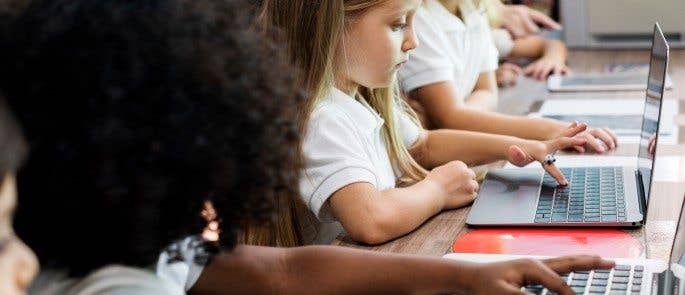
Remembering that some children will face additional vulnerabilities in terms of online safety – such as children with Special Educational Needs and/or Disabilities (SEND) – and adapting content and delivery to suit their needs is essential.
Examples of Media Literacy in the Classroom
Teaching media literacy in schools is about empowering children with the skills they need to navigate the content they encounter, as well as the opportunities to interact that they have, in the online world. As well as learning content specific to online safety, the following types of activity can help develop further media literacy skills.
Check The Facts – Do We Believe That?
This activity can be used with a variety of different sources that are suited to the age range, subject and topic that you are teaching. Your source should be some kind of online claim – it could be anything from a screenshot of a social media post claiming pet tortoises like to be massaged as it feels good on their shell to a statistic used in a political campaign or an advertising campaign.
Taking the ‘fact’, use a framework of questions like the ones below to help learners conduct their own fact-checking research:
- Who or what is making this claim?
- Why are they giving us this information? Are they trying to entertain us, persuade us, sell something, etc?
- Do we trust them? Are they experts in this field?
- Have they said where they got their information from?
- How could we check this same fact with different sources? How many sources would be needed for it to be reliable?
- Which sources would we trust and why?
Write the News
Task children with creating their own versions of new stories. These could be written, performed or recorded news stories. Give each group the same basic facts but a different ‘mission’ in terms of their audience.
This could be, for example:
- To make the audience feel a particular emotion – one group could be given ‘angry’ whilst a different group could be given ‘upset’.
- To persuade the audience to do something – i.e. take a side in a debate, want to donate to a cause or to change their mind about something.
Challenge the children to think about how the language they select, accompanying images they use, and the tone or presentation style can all be manipulated to achieve different goals using the very same facts.
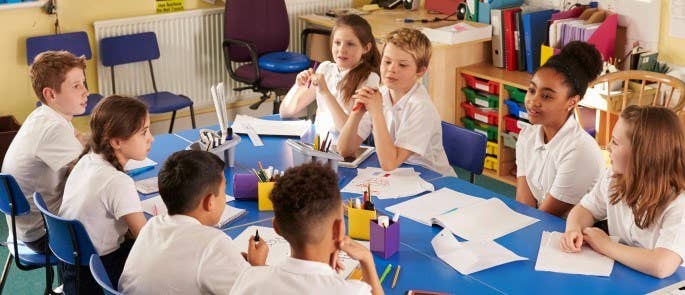
After the children have presented their finished work to each other, discuss how the very same news was reported in many different ways, with different effects. Relate this explicitly to using media literacy skills to critically evaluate the content that they encounter.
This activity can work well alongside literacy topics on persuasive writing, or history topics looking at examples of propaganda.
The National Literacy Trust has a wide range of resources available – aimed at developing news literacy in particular.
Make a Fake
In computing, art or design you could challenge children to use their digital skills to come up with a new creature or a fake animal and to try to make it as convincing as possible.
Show children engaging examples of how visuals have been used in the past to try to ‘trick’ people into believing something (such as the classic ‘Spaghetti Tree’ April Fool’s Day newsreel or the story of the Cottingley Fairies). Then relate this to our modern consumption of images – for example, find pictures online of celebrity photos before and after airbrushing, or prepare some images using popular ‘filters’.
Visual literacy plays a large part in media literacy. Our article What is Visual Literacy? has further details, including specific classroom applications.
Fact or Opinion?
This can be played as a starter to a lesson, or used for a quick brain break. Show a snapshot from the media – making sure you use a wide variety of types over a period of time, including news pieces, memes, TV clips etc – and ask your students, ‘fact or opinion’?
The learning comes from the follow up question which is – how do you know? It is important to encourage continual questioning and discussion. The material you use can, once again, be tailored to learning that is going on at that point – and can be used in any subject.
Media literacy is, and will continue to be, a vital skill set. By providing opportunities for children to develop and practise their media literacy skills in school, you can help equip them to navigate, and critically engage with, the content they encounter, as well as to help keep them and others safe in the online spaces they inhabit. We hope you have found this article useful for your practice.
Further Resources:
- Online Safety & Harms Course
- Safeguarding Children Legislation: Guidance for Schools
- Internet Safety Posters for Schools
- How to Respond to Dangerous Online Challenges: Guidance for Schools
- How Much Do You Know About Internet Safety? KS2 Quiz
- The Importance of Financial Literacy in Schools
- Technology in Education
